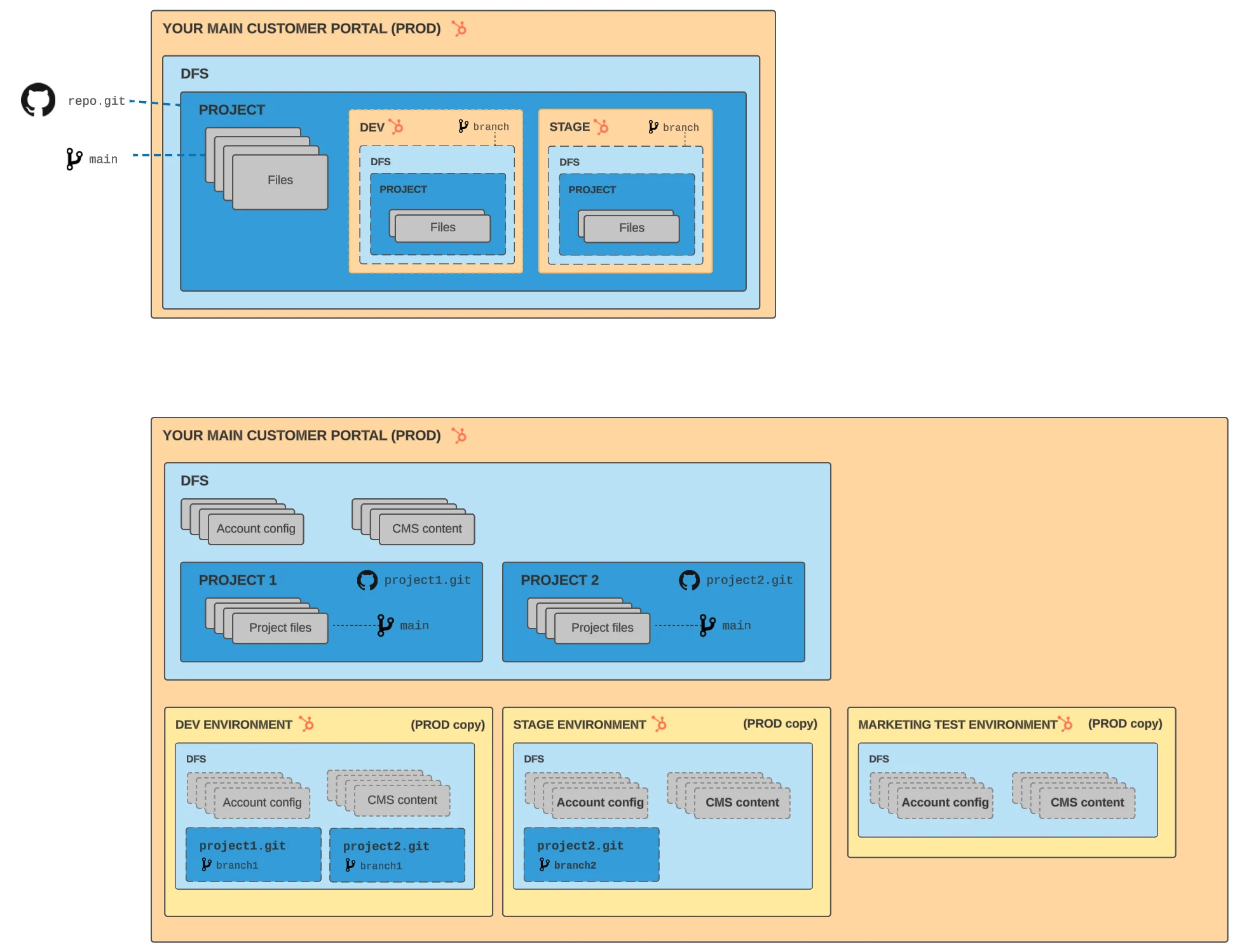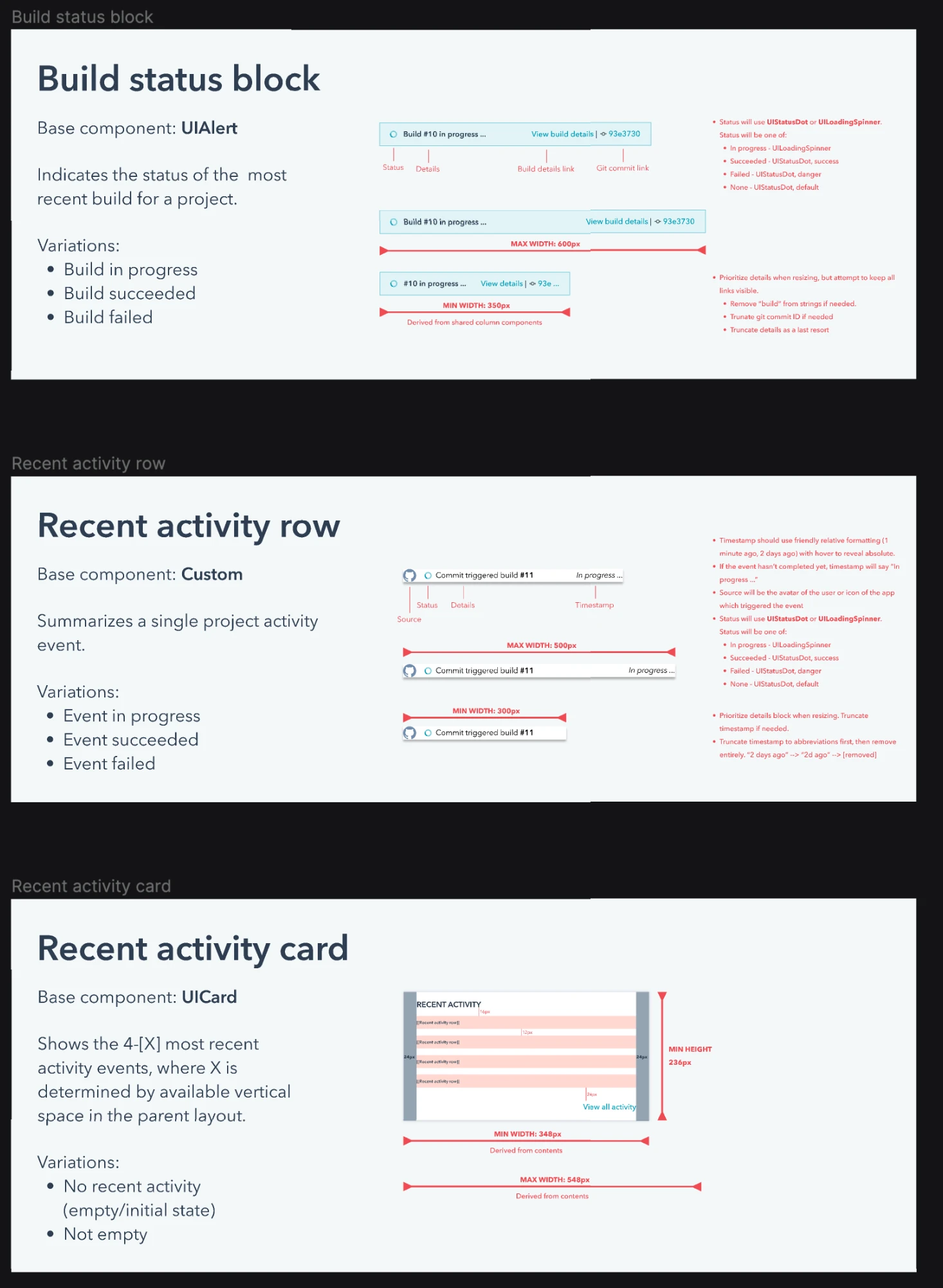The developer projects framework is an effort to reinvent how developers build anything and everything on HubSpot's platform. We began with a fairly simple goal of incrementally improving the quality of life for app developers, and quickly realized we had an opportunity to level up the platform considerably with a more developer-first approach.
The problem
Historically, HubSpot apps have been created and managed entirely through the developer tools UI, with no version control or change history. Developers couldn’t manage their app configurations using the same processes and tooling as the rest of code their codebase. This lead to inconsistencies, difficult rollbacks, and limited feature support. As HubSpot expanded its platform capabilities, the lack of a structured development workflow became a growing pain point.
From a business perspective, HubSpot needed a scalable way to support hosted features and UI extensions as partners were demanding deeper integrations. Without a standardized framework, building and distributing these extensions was fragmented and inconsistent. This project aimed to bridge that gap, creating a developer-first system that streamlined app configuration, versioning, and deployment. This framework has ultimately laid the groundwork for the entire platform’s future growth.
My approach
As the sole designer, I collaborated closely with Staff Engineers and Product Management to shape the framework’s architecture, UI, and overall developer experience. My focus was on creating a system that balanced flexibility for developers with structured workflows that aligned with HubSpot’s evolving platform. Through research, system design, and iterative testing we built a scalable foundation for app development.
Research & discovery
Leading into this effort we relied on significant research to understand developer needs and expectations, as well as get a handle on what similar frameworks in the industry were doing.
I coordinated and conducted exploratory interviews with existing HubSpot app developers, including several members of our partner community, to understand their development practices and where the current app architecture fell short. I also did competitive analysis of several peer platforms such as Shopify, Salesforce, and Stripe to better understand industry trends.
Defining the architecture
The project framework introduced a structured, source-controlled approach to building HubSpot apps. At its core a Project acts as a container for app Components, which can in turn include features such as serverless functions, UI extensions, or API authentication. Developers can manage these components as source code, using a familiar build and deploy pipeline and optional GitHub integration. This enables version control, team collaboration, and more streamlined deployments.



Crafting a new developer experience
A key interaction design consideration for this effort was seamlessly integrating multiple touchpoints across local and web-based tooling. We introduced new capabilities into HubSpot command-line interface (CLI) to support projects development.
I designed all user interactions around these workflows, working with several teams to ensure the CLI and UI interactions worked together coherently. I began by storyboarding key moments in the developer journey, focusing on how high profile features like React UI extensions would be built, tested, and deployed.


I then drilled into UI designs, laying out the developer experience across the CLI and web-based development tools.


I established several new UI components and patterns as part of this effort that went outside HubSpot existing design system. Being a much more technical persona, the needs of project developers for observability and configuration couldn't easily be met by available UI components. I also established the foundation of our CLI design guidelines to ensure consistency and cohesion for all CLI-based developer interactions.



Validating the reinvented framework
To validate the projects framework, we launched a beta program with early adopters from HubSpot’s developer community. Feedback from private app developers helped us refine key aspects, including build workflows, deployment processes, and UI extension support. I coordinated and led these interviews.
As adoption expanded to public apps, we iterated based on real-world use cases, improving documentation, error handling, and integration patterns. Continuous testing and developer feedback loops ensured that the framework evolved to meet the needs of both independent developers and platform partners.

Impact and future direction
Since the launch of the developer projects framework (beta) in 2023, we have seen over 27,000 active projects created by developers.

The apps created by these projects have been installed on over 34,000 HubSpot customer accounts, and correspond to nearly $50 million in impacted MRR.
Not only has this framework been a huge success, it's become the platform on which all HubSpot development is built.
